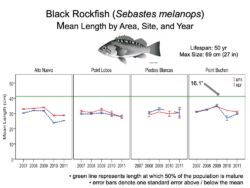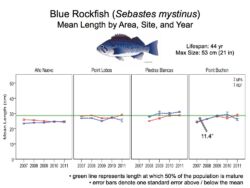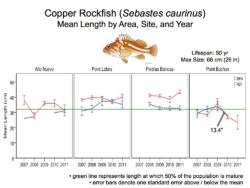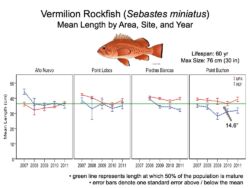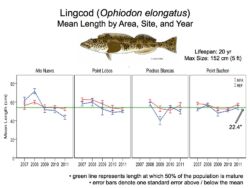Do MPAs result in larger fishes?
There are many instances where fish species are generally larger inside marine protected areas (MPAs) than in areas exposed to fishing (REF). However, these instances are species- and area-specific. Take a look at the below graphs for examples from CCFRP surveys (2007 to 2013).
As you can see, Black Rockfish are larger in the Año Nuevo MPA than in the REF site. Blue Rockfish and Lingcod are approximately the same size in both MPA and REF sites. Copper Rockfish are larger in the Point Lobos and Point Buchon MPAs and Vermilion Rockfish are generally larger in the Point Lobos, Piedras Blancas, and Point Buchon MPAs. Please note that many species and areas display a difference in length at the start of the sampling period (when MPAs were implemented in central California), which is likely due to initial differences in habitat quality.
The above differences in mean lengths between MPA and REF translate into differences in biomass. Although CCFRP does not collect weight information on fishes caught, biomass estimates can be calculated for MPA and REF sites using established length-weight relationships from available literature. When applying the spillover principle, additional biomass produced within MPA bounds can become available to the fishery.
1: Wyllie Echeverria 1987; 2: Silberberg et al. 2001


